Study Tours(domestic)
It is important for students to understand the characteristics, equipment, operational environment and circumstances of each service.
The course student officers visit the places shown on this screen and have opportunities to see the real situation of each unit, and to discuss with unitfs commanders and staff officers of major commands.
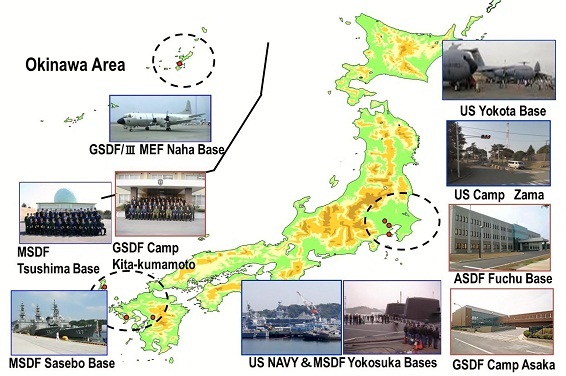
Latest study tours
Field Study to Okinawa
The 17th class of Joint Advanced Course (#17 JAC) visited Okinawa and the neighbor vital area of defense for a field study from 8th to 12th of December with the purpose to understand the current situations and characteristics of the Japan Self-Defense Forces (JSDF) and the U.S. Forces in Okinawa.
The field study included visits to the 5th Air Defense Missile Group of the Japan Air Self-Defense Force (JASDF) on December 8th, to the JASDF Southwestern Composite Air Division (SCAD) Headquarters, the Fleet Air Wing 5 (FAW 5) of the Japan Maritime Self-Defense Force (JMSDF) and the 15th Brigade of the Japan Ground Self-Defense Force (JGSDF) on the 9th, and to the U.S. III Marine Expeditionary Force (III MEF) and the JASDF 83rd Air Wing on the 10th, at all of which the students received briefings and equipment tours.
Lt Gen Sugiyama, the then Commander of JASDF SCAD, RADM Hatano, the Commander of JMSDF FAW 5, and MG Agario, the Commander of JGSDF 15th Brigade talked about the current situation in Okinawa and local characteristics, including having Q&A sessions. Lt Gen Wissler, the III MEF Commanding General, explained about the joint operation of the U.S. Forces for our students.
On the 10th and 11th, the group flew above the Okinawa island and Sakishima islands to check the situation. On the 12th, they transferred at Hamamatsu Air Base on the way back and visited the JASDF Airborne Early Warning Group, where they received a command brief and equipment tour.
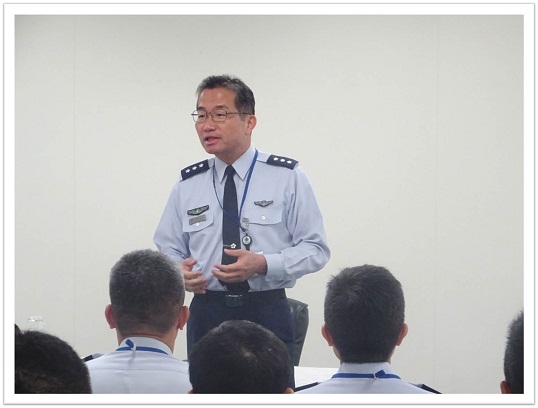 |
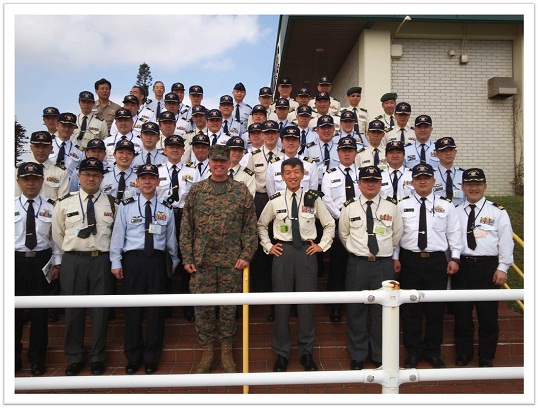 |
Address by Lt Gen Sugiyama |
Group photo with LTG Wissler |
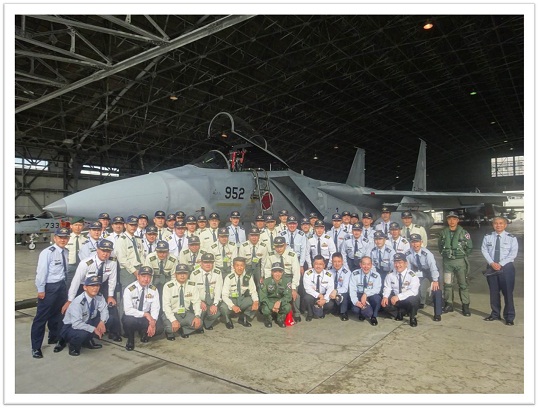 |
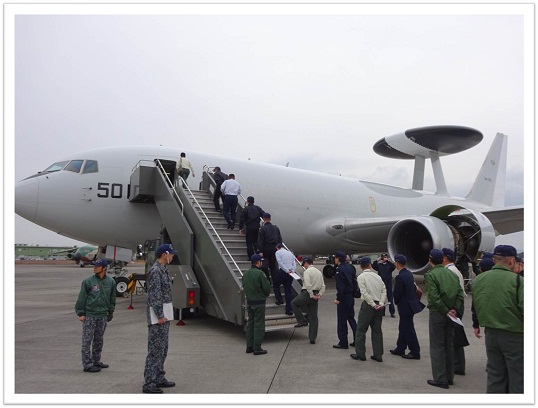 |
JASDF 83rd Air Wing |
JASDF Airborne Early Warning Group |
Field Study to Atsugi
The 17th class of Joint Advanced Course (#17 JAC) visited Atsugi for a filed study on 3rd of December with the purpose to understand the current situation and characteristic of Japan Maritime Self-Defense Force (JMSDF) Fleet Air Force.
The field study included the address by Commander of Fleet Air Force, the command brief by a senior staff officer of the headquarters, and the tour to a new type of JMSDF patrol aircraft P-1.
The students also visited the U.S. Navy Carrier Air Wing Five based at Atsugi, were briefed about the unit by CAG, Captain William S. Koyama and had the apron tour.
Questions and answers were so actively exchanged at every site, that the students could understand the role of JMSDF Fleet Air Force headquarters as a force-provider in supporting the operations of Self Defense Fleet headquarters, as well as the current situation of JMSDF Fleet Air Forces. They could also develop their insights on the U.S. Navyfs organizational formation and operation of the CVW, which remains the core of U.S. Navyfs striking strength.
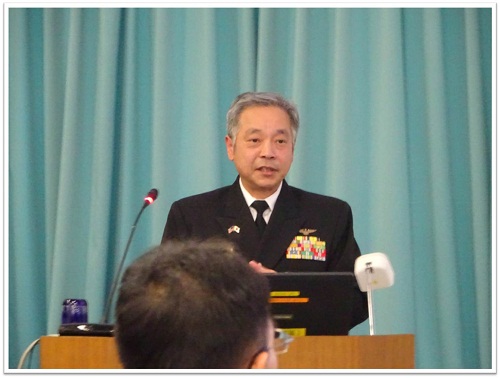 |
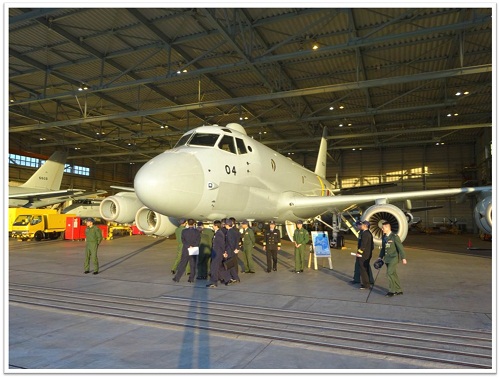 |
Address by Commander of Fleet Air Force |
Tour to the JMSDF patrol aircraft P-1 |
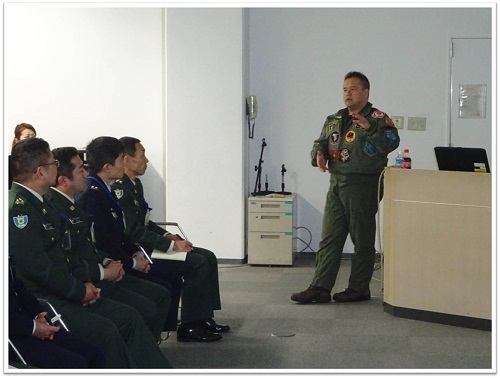 |
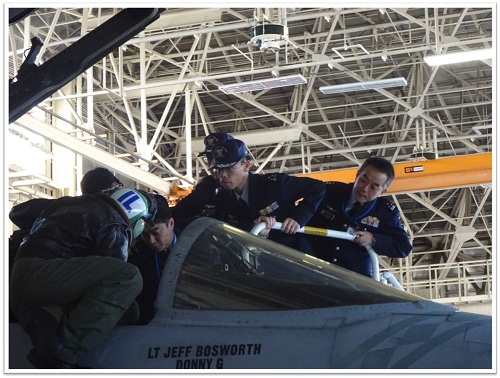 |
Command brief about U.S. Navy |
Tour to the U.S. Navy carrier-based aircraft |
Field Study to Yokosuka
The 17th class of Joint Advanced Course (#17 JAC) visited Yokosuka for a field study on 27th and 28th of November with the purpose to understand the current situations and characteristics of Japan Maritime Self-Defense Force (JMSDF) and U.S. Naval Forces Japan in Yokosuka.
The filed study included the addresses by Commander in Chief of Self Defense Fleet and Commandant of Yokosuka District, the command briefs by senior staff officers of such headquarters as Self Defense Fleet, Fleet Escort Force, Fleet Submarine Force and Yokosuka District, and ship tours to the JS gKirishimah and a submarine.
During their visit to U.S. Naval Forces Japan in Yokosuka, the students had the opportunity to tour the USS George Washington, and the CTF70 Chief of Staff, Captain Nelson P. Hildreth, briefed them about a Carrier Strike Group.
Questions and answers were so actively exchanged at every site, that the students could deepen their understanding on maritime operations from the joint operational perspective, which is quite hard to understand in classroom lectures, and they could also develop their views on the reality of interoperability between the U.S. and Japan, throughout the whole tour to Yokosuka, where both countriesf maritime major commands and key units are concentrated.
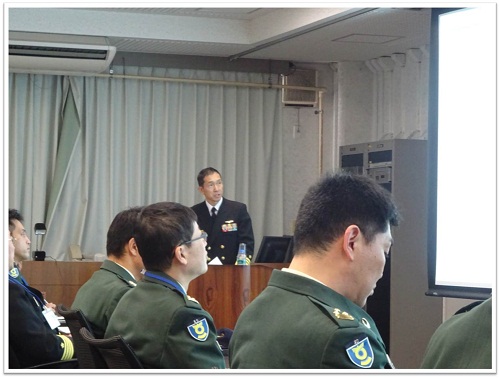 |
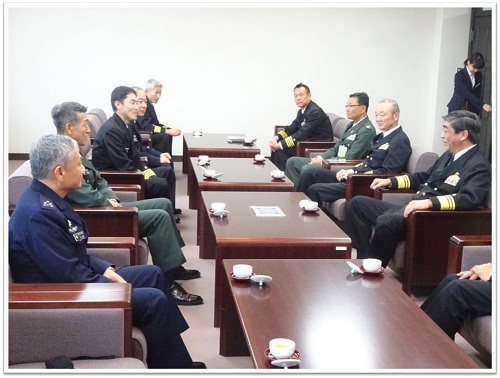 |
Address by Commander in Chief of |
Courtesy call on Commandant of |
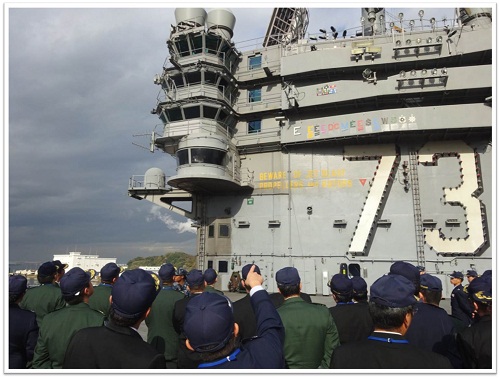 |
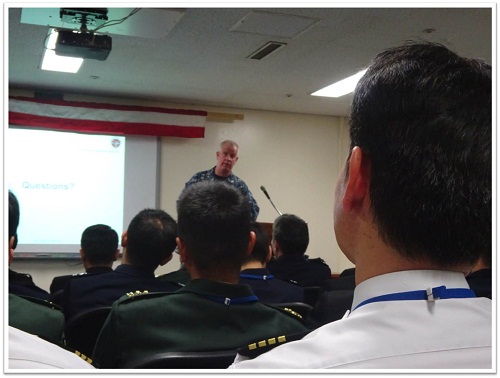 |
Tour to the U.S. Navyfs aircraft carrier |
Visit to the U.S. Navy Carrier Strike |
Field Study to Camp Zama
On October 16th, the students of the 17th Joint Advanced Course visited Camp Zama. This field studyfs purpose is to help understand the current situation and issues of joint operation in Japan, as well as the current situations of the U.S. Army Japan (USARJ) and the Japan Ground Self-Defense Forcefs Central Readiness Force (CRF).
In the morning, they first visited the Yokohama North Doc, the U.S. Armyfs 836th Transportation Battalion, and the U.S. Army Materiel Command. After receiving command briefings on the unit deployment support and terminal services, they had a tour of LCU-2000 class landing craft.
After moving to Camp Zama in the afternoon, they had a luncheon with the USARJ leadership and were given direct explanation by Deputy Commander Colonel Richard Hayward. While promoting friendship with the U.S. Forces officers, Deputy Commander spoke gWe will continue to set a high value on the Japan-U.S. Alliance and have a strong will to firmly maintain this strong alliance.h The students could make sure the strong bond between the U.S. and Japan.
Then, they moved to the Central Readiness Force (CRF) HQs and received an address by Vice Commanding General Major General Taizo Horii. The students were all ears when he was mentoring about a grounded ability required for a commanding officer.
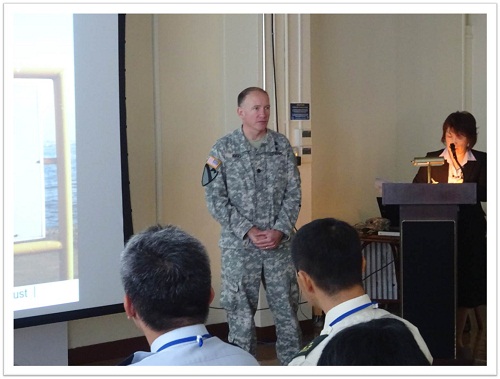 |
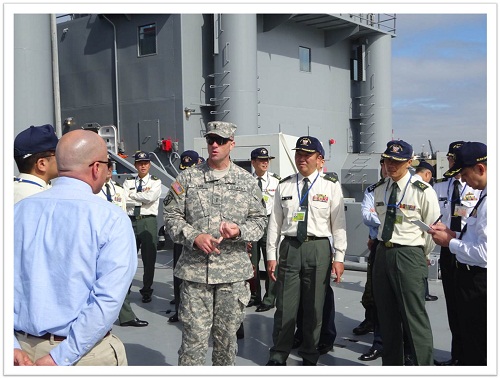 |
Command brief of 836th |
Landing craft tour in U.S. Army |
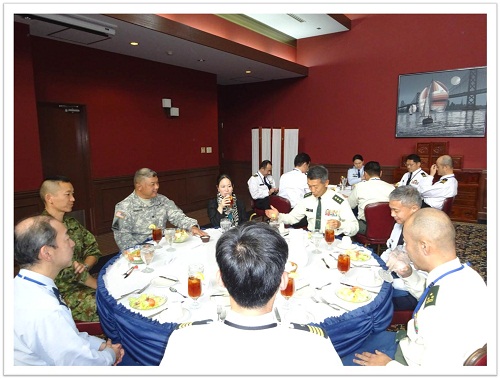 |
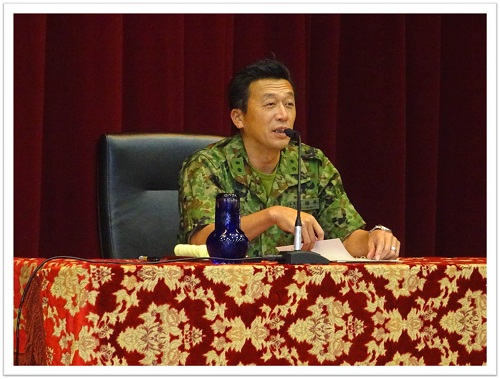 |
Luncheon in USARJ |
Address by Vice Commanding |